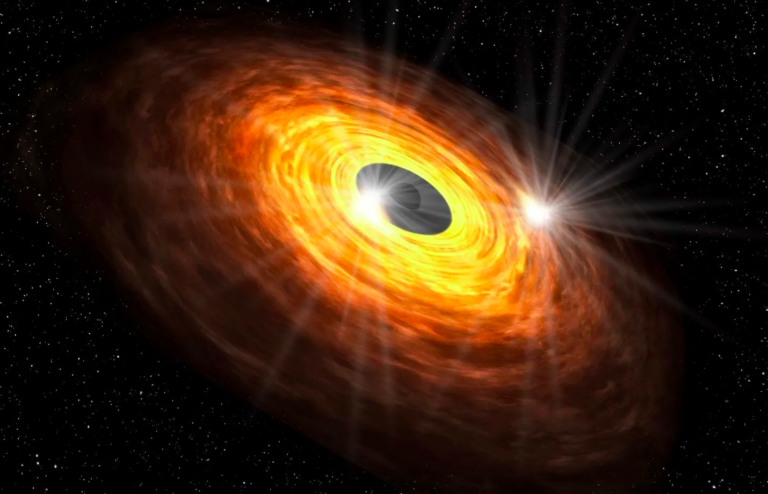Researchers Witness Peculiar Illumination at the Core of the Milky Way
Astronomers Detect Recurring Light Emissions Near the Black Hole at the Center of Our Galaxy.
Astronomers delved into the core of our galaxy, unveiling unexpected illuminations. Utilizing the ALMA telescope in Chile, a team of Japanese scientists detected intermittent flashes emanating from the vicinity near the center of the Milky Way, home to the supermassive black hole Sagittarius A* (Sgr A*). These twinkles are likely attributed to rotating radio spots encircling the black hole—a cryptic area entrenched in formidable gravitational forces.
The ALMA research group, spearheaded by Yuhei Iwata, a graduate student at Keio University, Japan, unraveled this discovery. Iwata expounded that the colossal Sgr A*, boasting a mass equal to 4 million suns, has exhibited flaring activities in millimeter wavelengths, infrared light, and X-rays previously. However, this time, the scientists procured data on radio-wave intensity over a span of 10 days (including 70 minutes daily) and pinpointed two distinct trends: “quasi-periodic variations with a typical time scale of 30 minutes and hour-long slow variations.”
Do these luminous emissions stem from the black hole itself? Presently, the understanding suggests that the black hole does not emit any form of radiation. Instead, the sources of these illuminations are likely hotspots formed within the scorching gas disk encircling the supermassive black hole. This disk rotates around the black hole, constituting an accretion disk.
The astronomers’ observations unveiled that the 30-minute fluctuations align with the orbital period of the inner edge of the accretion disk. Professor Tomoharu Oka from Keio University, also involved in the study, emphasized that this discovery provides “compelling insight into the gas dynamics” encircling the black hole.
The research group’s other members included Masato Tsuboi of the Japan Space Exploration Agency/The University of Tokyo, Makoto Miyoshi from the National Astronomical Observatory of Japan/SOKENDAI, and Shunya Takekawa of the National Astronomical Observatory of Japan.
Check out their new paper in the Astrophysical Journal Letters.
Do not forget to share your opinion with us to provide you with the best posts !




0 Comments